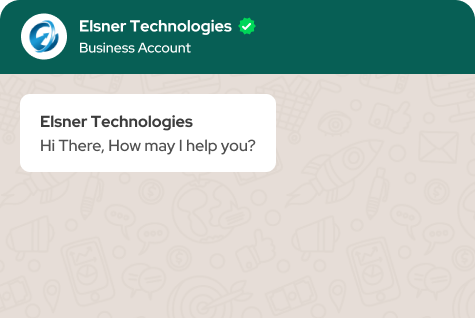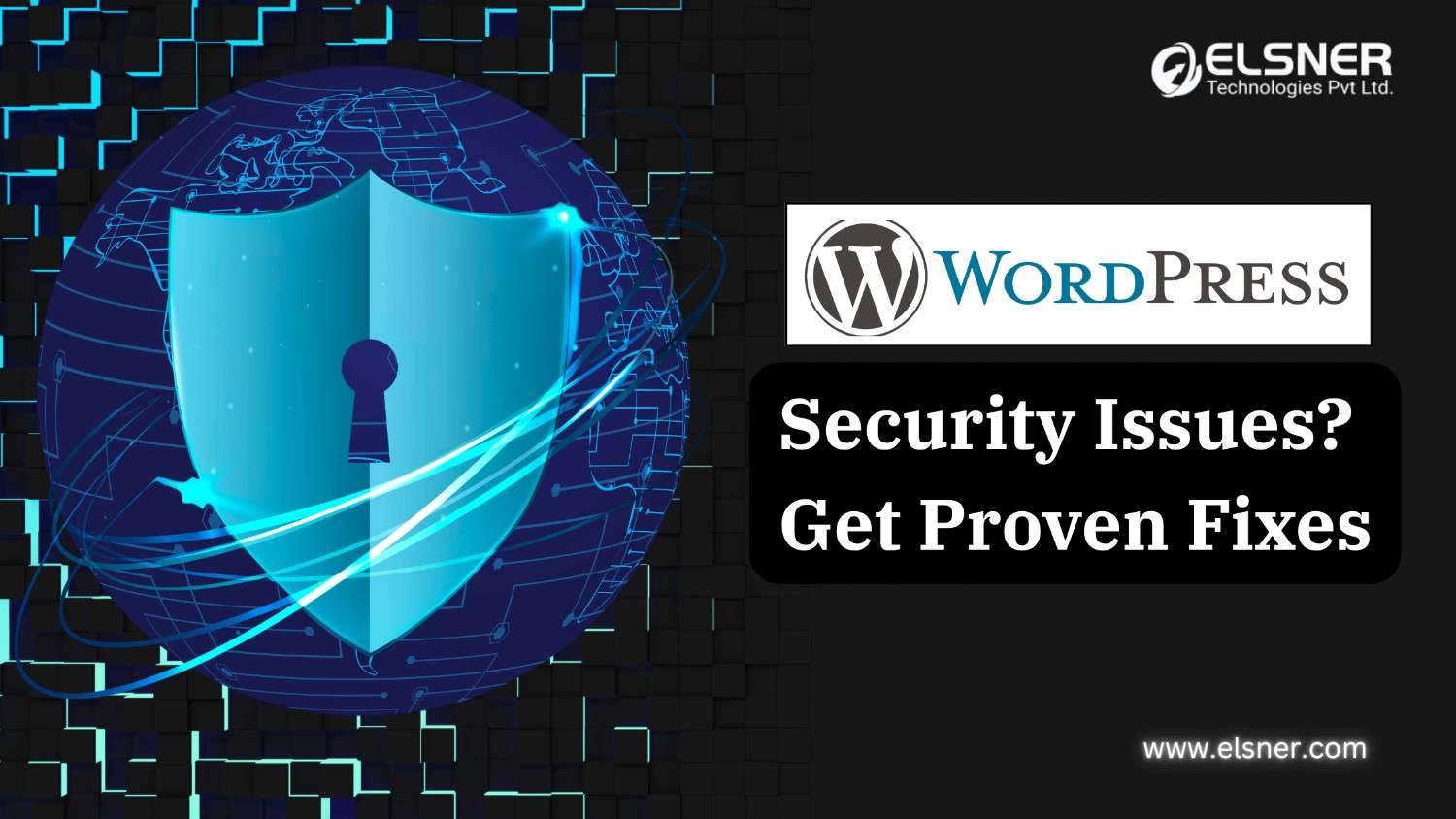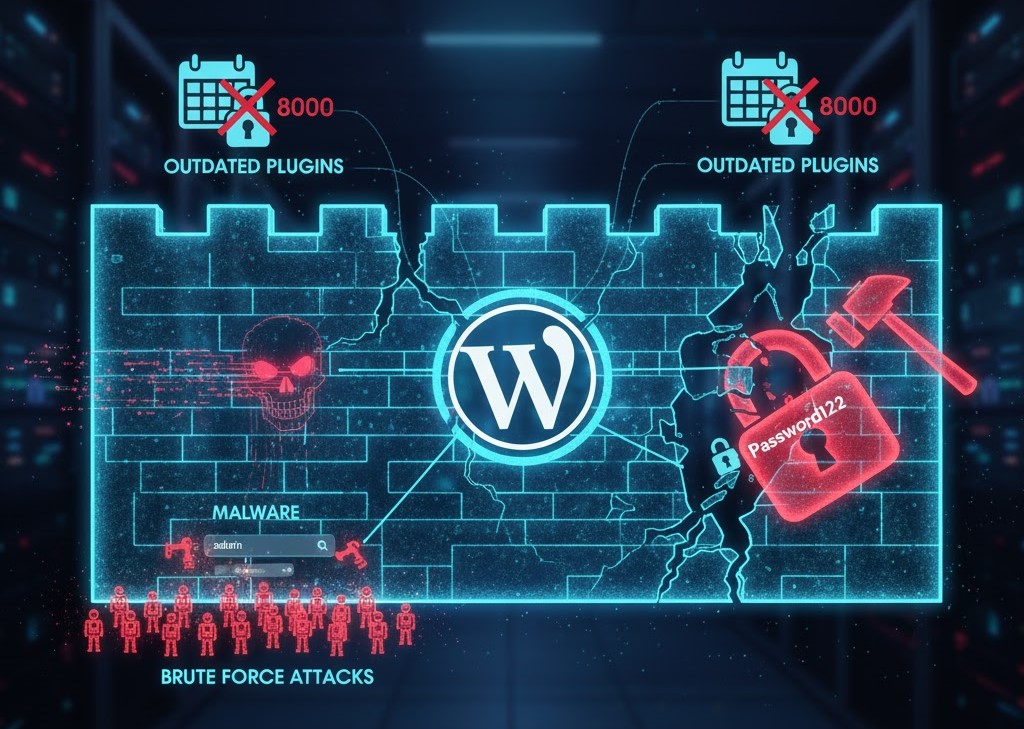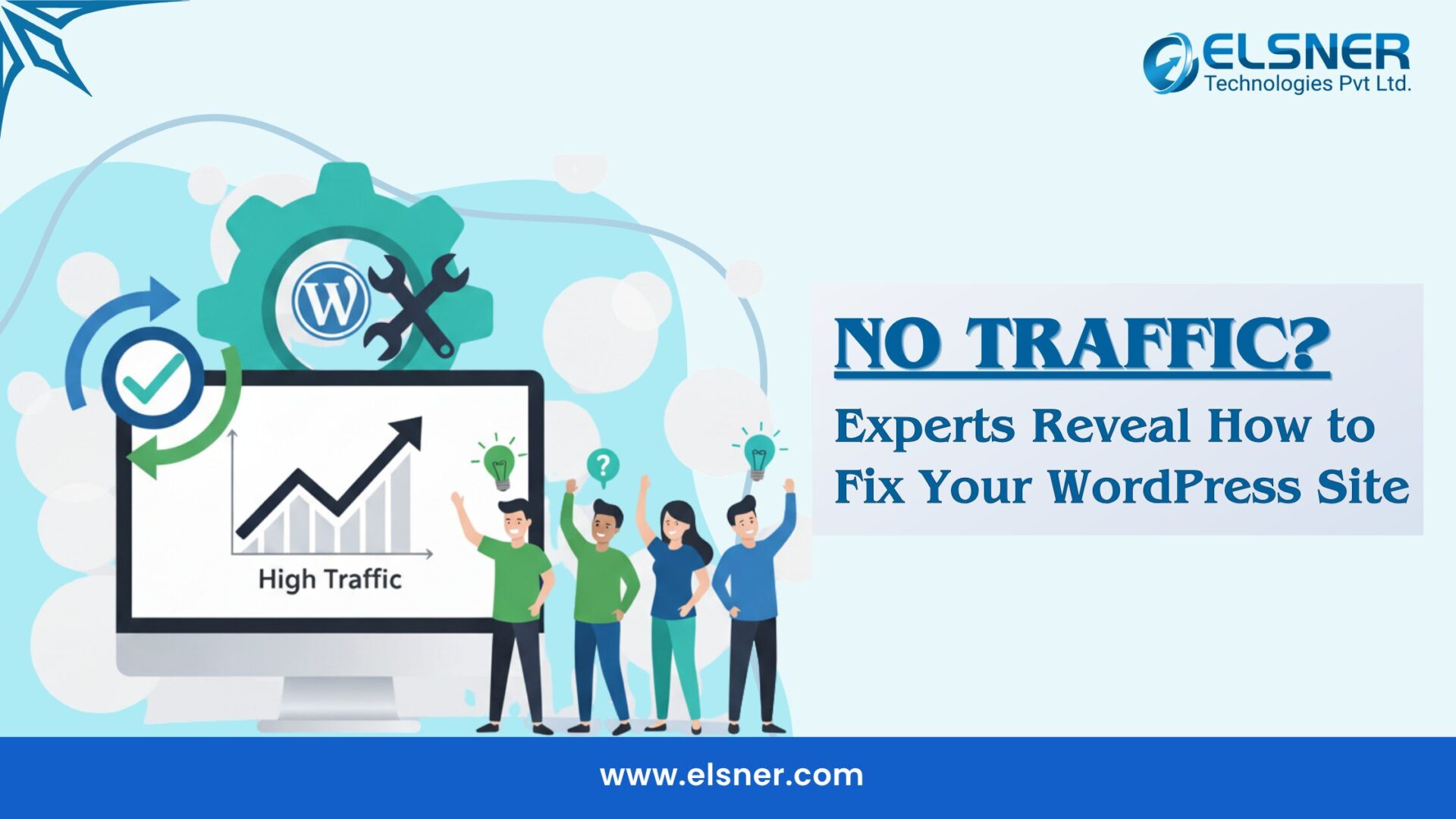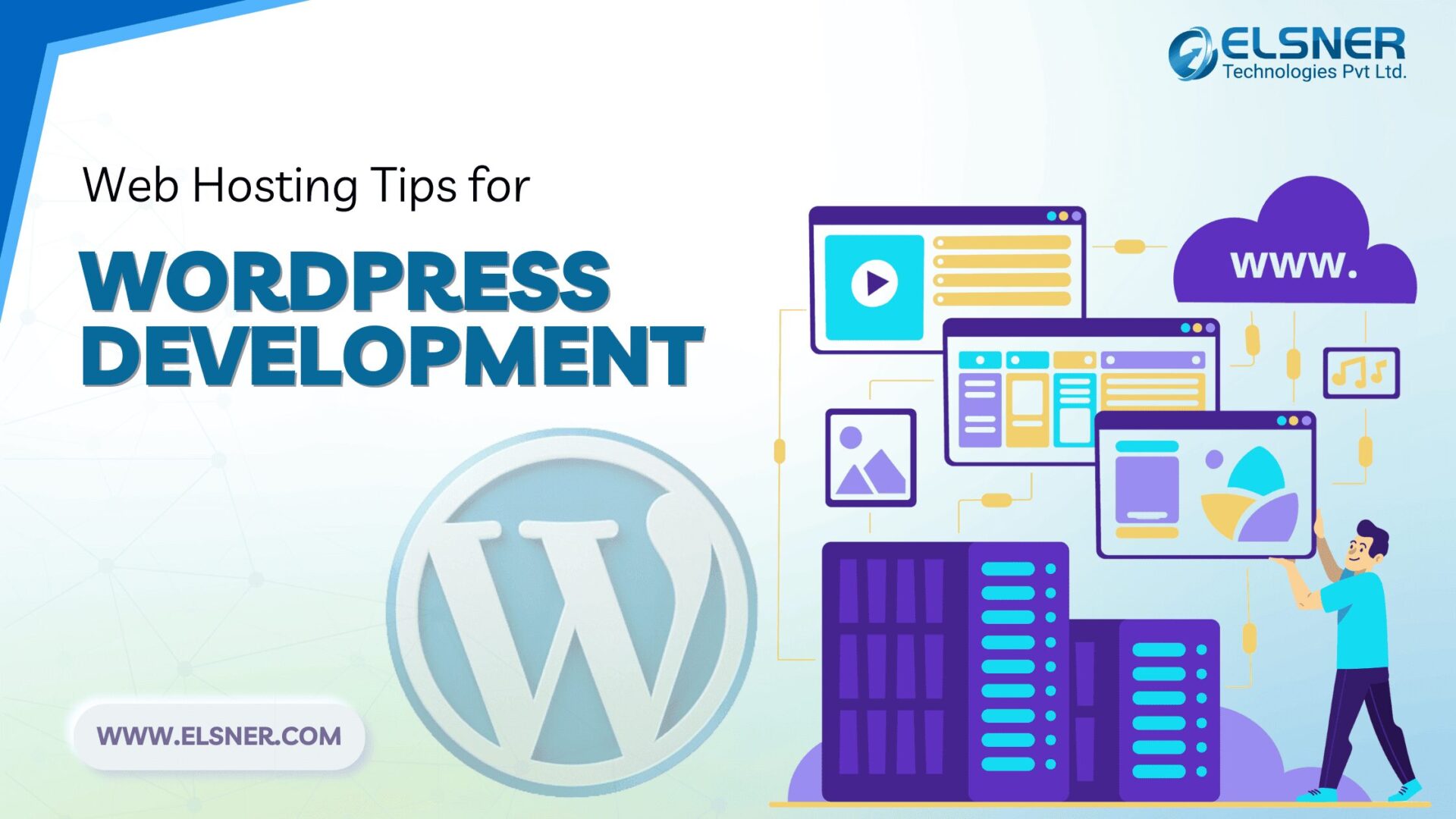- What are WordPress Security Issues?
- Malware
- Brute Force Attacks
- Outdated Plugins
- Weak Passwords
- WordPress Security Optimization – How to Protect Your Site?
- Fix Authentication First
- Choose Better Hosting
- Keep Everything Updated
- Add SSL/HTTPS
- Block Login Attempts
- Hire WordPress Security Experts
- WordPress Security Tips Every Business Should Follow
- Weekly Plugin Audit
- Daily Backups
- Watch for File Changes
- Control User Access
- Install Security Plugins
- Common Mistakes That Increase the Risk of WordPress Security Issues
- Don’t Use Free Plugins
- Don’t Ignore Updates
- Don’t Keep Default Settings
- Don’t Cheap Out on Hosting
- Don’t Skip Employee Training
- How to Implement a WordPress Security Framework?
- Step 1: Assess Current Security
- Step 2: Harden the Site
- Step 3: Set Up Monitoring
- Step 4: Add a Firewall
- Step 5: Create Backup System
- Step 6: Establish Maintenance Schedule
- When to Hire a WordPress Expert?
- Signs It’s Time for Expert Help
- What Experts Provide?
- Conclusion
- FAQs
- Is WordPress secure enough for e-commerce?
- What’s the most important WordPress security measure?
- Can WordPress security be handled internally, or does it need an expert?
Is WordPress secure? It can be. But only if it’s set up correctly.
WordPress runs 40% of all websites. Hackers know this. They target WordPress sites daily with automated attacks.
WordPress itself doesn’t cause most WordPress security issues. They come from outdated plugins, weak passwords, and poor hosting choices. The good news? These problems can be prevented with simple fixes.
This WordPress Security Guide breaks down the biggest threats and shows exactly how to secure WordPress website from hackers.
What are WordPress Security Issues?
WordPress core is actually quite secure. The WordPress security issues start with everything around it.
Malware
Malicious code gets injected into sites. It steals data, redirects visitors, or tanks SEO rankings. Most site owners don’t notice for weeks.
Brute Force Attacks
Bots hammer login pages with thousands of password guesses. They eventually get in if passwords are weak.
Outdated Plugins
Last year alone, 8,000 plugin vulnerabilities were discovered. Hackers scan for these constantly. One outdated plugin is all they need.
Weak Passwords
“Password123” gets cracked instantly. So does “admin” as a username. The password needs to be strong to protect the WordPress site from threats.
What is WordPress in Cyber Security? It’s a system where everything needs to work together—core software, plugins, hosting, and user habits. Break one link, break the whole chain.
Protecting a WordPress site from threats starts with knowing what’s actually at risk.
WordPress Security Optimization – How to Protect Your Site?
How to improve WordPress security isn’t complicated. It just requires consistency.
Fix Authentication First
Strong passwords matter more than anything else:
- 16+ characters minimum
- Mix letters (upper and lower), numbers, and symbols
- Never reuse passwords across sites
- Enable 2FA on every admin account
- Change the default “admin” username
Choose Better Hosting
Cheap hosting costs more in the long run. To prevent a WordPress site from threats, look for:
- Automatic malware scanning
- DDoS protection
- Daily backups
- Isolated server environments
Shared hosting on oversold servers? That’s asking for trouble.
Keep Everything Updated
|
What to Update |
How Often |
|
WordPress core |
Immediately (enable auto-updates) |
|
Plugins |
Weekly |
|
Themes |
Weekly |
|
PHP version |
Check quarterly |
Updates patch security holes. Delays leave doors open for attackers.
Add SSL/HTTPS
Every site needs HTTPS now. It encrypts data and boosts Google rankings. Most hosts offer free SSL certificates through Let’s Encrypt.
Block Login Attempts
Limit failed login tries to 3-5 attempts. Then block that IP for 24 hours. This single step stops most brute force attacks.
This WordPress security checklist covers the essentials. Run through it monthly at a minimum.
Following these steps is core WordPress security optimization.
Hire WordPress Security Experts
Let professionals monitor, update, and optimize your site’s security. Focus on growth while we handle protection from evolving threats.
WordPress Security Tips Every Business Should Follow
Security isn’t a one-time setup. It’s ongoing maintenance.
Weekly Plugin Audit
Delete plugins that aren’t being used. Check when each plugin was last updated:
- No updates in 12+ months? Red flag
- The developer abandoned it? Delete it
- Negative reviews mentioning security? Remove it immediately
Every inactive plugin is a potential backdoor.
Daily Backups
Automate backups and store them off-site. Not on the same server as the website.
Test restoring from backup every quarter. Many businesses find out their backups don’t work during an actual crisis.
Watch for File Changes
Security plugins monitor when files get modified. Set up alerts for:
- Unauthorized file edits
- New admin users
- Plugin installations
- Theme changes
Control User Access
Give people the minimum permissions they need:
- Writers don’t need admin access
- Remove old employee accounts immediately
- Review all users quarterly
- Never share login credentials
Install Security Plugins
Quality security plugins create a WordPress security framework that includes:
- Web application firewall
- Malware scanning
- Real-time threat blocking
- Login protection
Need help implementing all this? WordPress development services often include security optimization and monitoring as part of their packages.
These WordPress Security Tips prevent 95% of common attacks.
Common Mistakes That Increase the Risk of WordPress Security Issues
Some mistakes show up repeatedly. Stop making them.
Don’t Use Free Plugins
“Free” pirated plugins come with malware baked in. The hidden backdoors aren’t worth saving $50.
Don’t Ignore Updates
“If it’s not broken, don’t fix it” doesn’t apply to security updates. The LiteSpeed Cache vulnerability hit 5 million sites. All because people delayed updating.
Don’t Keep Default Settings
Change these immediately:
- Username from “admin” to something unique
- Database prefix from “wp_” to something random
- Login URL from “/wp-admin” to a custom path
Don’t Cheap Out on Hosting
Why are people moving away from WordPress? Often, because they chose $3/ 3/month hosting and dealt with constant security problems.
Budget hosting means:
- Slower response times to attacks
- Shared server contamination risks
- No real security support
- Limited backup options
Don’t Skip Employee Training
Phishing emails target employees. One clicked link can compromise everything.
Knowing how to secure WordPress websites from hackers means avoiding common WordPress mistakes.
How to Implement a WordPress Security Framework?
Random security measures don’t work well. A systematic approach does.
Step 1: Assess Current Security
Run a full security scan. Document:
- All installed plugins and themes.
- User accounts and permissions
- Current WordPress and PHP versions
- Existing security measures
Step 2: Harden the Site
Apply basic security measures:
- Strong passwords across all accounts
- 2FA for admins
- SSL certificate
- Login attempt limits
- Proper file permissions
Step 3: Set Up Monitoring
Configure alerts for:
- Failed login attempts
- File modifications
- New user accounts
- Suspicious traffic patterns
Step 4: Add a Firewall
Web application firewalls filter traffic before it reaches the site. They block common attack patterns automatically.
Step 5: Create Backup System
Set up automated daily backups with:
- Multiple restore points (keep 30 days minimum)
- Off-site storage
- Documented restoration process
- Quarterly restoration tests
Step 6: Establish Maintenance Schedule
|
Task |
Frequency |
|
Security scan |
Daily (automated) |
|
Plugin updates |
Weekly |
|
User audit |
Monthly |
|
Backup test |
Quarterly |
|
Full security review |
Quarterly |
This WordPress security framework provides systematic protection. It covers everything in the WordPress security checklist through regular, scheduled maintenance.
The framework approach to WordPress security optimization beats reactive scrambling every time.
When to Hire a WordPress Expert?
Some situations need professional help, and the best WordPress security tips:
Signs It’s Time for Expert Help
- Repeated Hacks: Getting hacked once is bad. Twice means there’s an underlying problem that needs professional diagnosis.
- Mysterious Traffic Drops: Sudden drops often mean Google flagged the site for malware or spam. This requires immediate expert intervention.
- Compliance Requirements: Healthcare, finance, and e-commerce sites have strict regulations. HIPAA, PCI-DSS, and GDPR compliance isn’t DIY territory.
- No Internal IT Team: Small businesses without a dedicated tech staff benefit from WordPress Maintenance plans. It’s cheaper than hiring full-time.
- Major Site Changes: Migrations, redesigns, or custom development introduce new vulnerabilities. Experts ensure nothing breaks during transitions.
What Experts Provide?
Professional WordPress Maintenance plans typically include:
- Daily security monitoring
- Immediate threat response
- Regular updates and patches
- Performance optimization
- Compliance management
Hire WordPress experts to help when security becomes too complex or time-consuming to handle internally. The cost of prevention is always less than the cost of recovery after an attack.
Before choosing one, it’s smart to evaluate which WordPress support and maintenance package best suits your website’s size and traffic to ensure consistent performance and protection.
Conclusion
The WordPress Security Guide boils down to four things:
- Identify issues – Know what threatens the site
- Optimize protection – Implement proper security measures
- Follow best practices – Maintain security consistently
- Get help when needed – Recognize when expertise is required
The WordPress security checklist provided in this blog removes guesswork. Each item has a purpose. Each step builds on the last.
Still wondering how to improve WordPress security? WordPress Maintenance plans handle monitoring, updates, and optimization automatically. Hire WordPress expert teams to manage security complexities while focusing on business growth.
A professional WordPress security guide means protection from evolving threats without the daily headaches.
FAQs
Is WordPress secure enough for e-commerce?
Yes, with proper setup. WordPress plus WooCommerce runs thousands of successful stores. Requirements:
- SSL certificate,
- regular updates,
- quality hosting,
- PCI-compliant payment processing, and
- comprehensive security monitoring.
What’s the most important WordPress security measure?
Security works in layers. Strong passwords block basic attacks. Regular updates patch vulnerabilities. Quality hosting stops server-level threats. Backups enable recovery. All of them together create real protection.
Can WordPress security be handled internally, or does it need an expert?
Depends on the site complexity and team capabilities. Basic security is manageable for technical users who follow the checklist religiously. Complex sites, compliance requirements, or repeated security issues need professional oversight.

About Author
Pankaj Sakariya - Delivery Manager
Pankaj is a results-driven professional with a track record of successfully managing high-impact projects. His ability to balance client expectations with operational excellence makes him an invaluable asset. Pankaj is committed to ensuring smooth delivery and exceeding client expectations, with a strong focus on quality and team collaboration.
